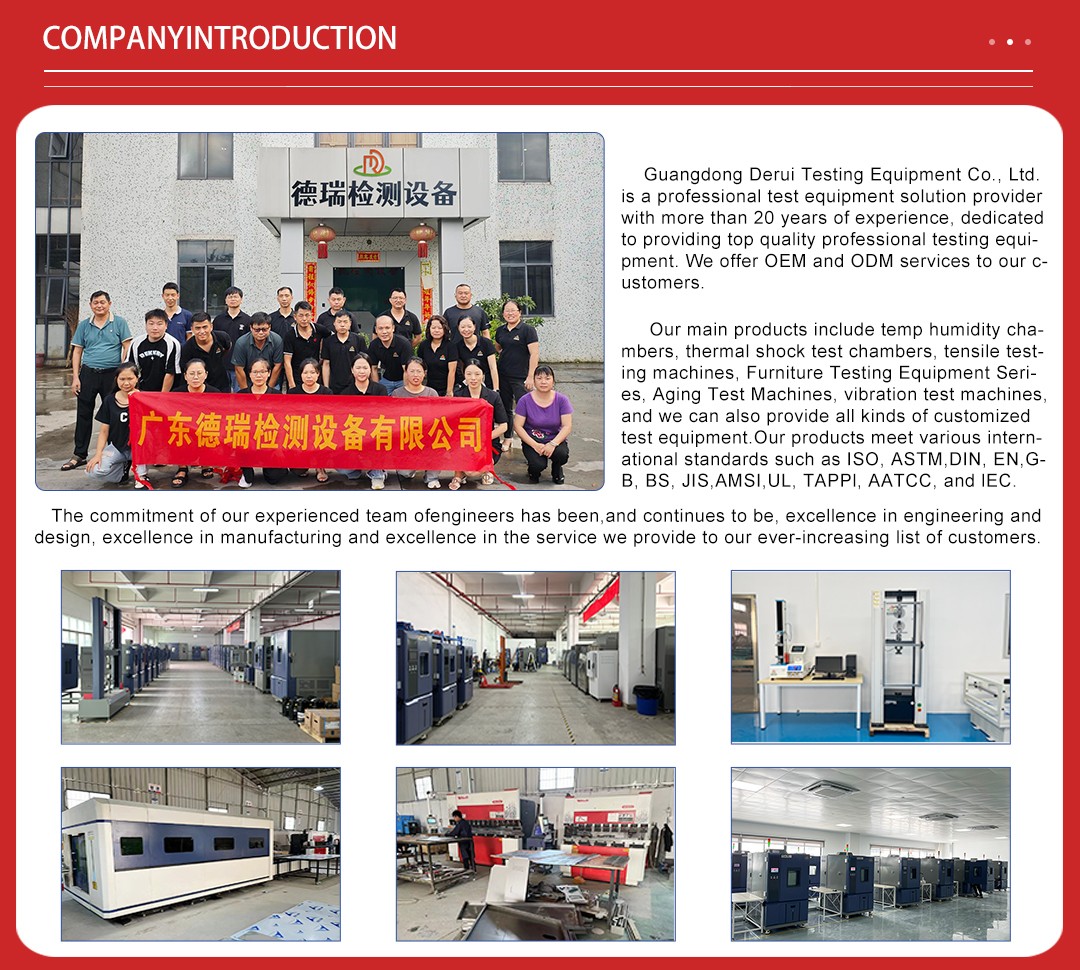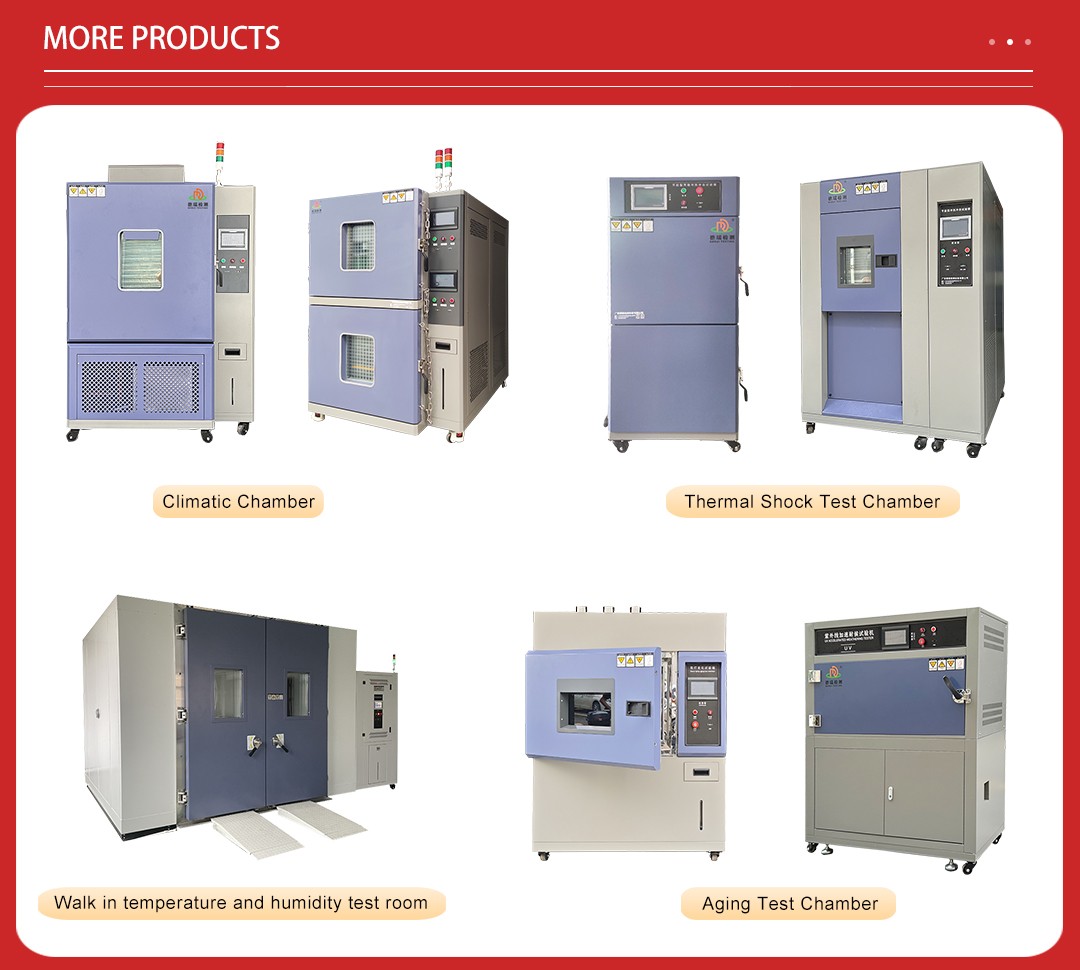
The Rapid Temperature Change Test Chamber is a critical tool for evaluating the robustness and reliability of electronic products under extreme temperature conditions. This chamber is designed to simu ...

The Rapid Temperature Change Test Chamber is a critical tool for evaluating the robustness and reliability of electronic products under extreme temperature conditions. This chamber is designed to simulate rapid temperature changes, which are common in real-world environments such as automotive electronics, aerospace components, telecommunications equipment, and consumer electronics. By subjecting electronic devices to abrupt temperature shifts, manufacturers can identify potential weaknesses in design, materials, and assembly processes, ensuring that products can withstand harsh operational conditions.
In the electronics industry, this test chamber plays a vital role in quality assurance and product development. It helps manufacturers assess the thermal cycling performance of components such as printed circuit boards (PCBs), integrated circuits (ICs), connectors, and power supplies. For example, in the automotive sector, it ensures that electronic control units (ECUs) can function reliably in varying climates, from freezing winters to scorching summers. In aerospace, it verifies that avionics systems can operate effectively during the rapid temperature changes experienced during takeoff and landing.

1. Wide Temperature Range: The chamber can achieve temperatures ranging from -70°C to +150°C, covering a broad spectrum of environmental conditions.
8. Data Acquisition and Analysis: Integrated sensors and software for continuous monitoring and data logging enable thorough analysis and reporting, supporting informed decision-making.

The rapid temperature change test chamber adheres to several international standards, ensuring that tests are conducted in accordance with recognized protocols:
- GB/T 2423.22: Environmental Testing – Part 2-22: Tests – Test N: Change of temperature

| Model | DR-H204-100 | DR-H204-150 | DR-H204-225 |
| Internal dimension | 400*500*500mm | 500*600*500mm | 600*750*500mm |
| External dimension | 750*1536*1310mm | 750*1636*1410mm | 850*1786*1410mm |
| Temperature(℃) | -20/-40/-70 | -20/-40/-70 | -20/-40/-70 |
| Maximum Current(A) | 22,22,28 | 22,22,28 | 18,18,23 |
| Voltage(V) | Single-phase220V | Single-phase220V | Three-phase380V |
| Temp,range | 0℃;-20℃;-40℃;-70℃~+150℃ | ||
| Test Method | Pneumatic Operated Door Switch(two/three-zone) | ||
| Temp.Display Accuracy | 0.01℃ | ||
| Temp.uniformity | ≤±2.0℃ | ||
| Temp.deviation | ±0.5℃~±0.2℃(without load) | ||
| Heating speed | 1℃/min~20℃/min,can be customized | ||
| Cooling Speed | 1℃/min~20℃/min,can be customized | ||
| Humid.range | 20%~98%RH | ||
| Humid.resolution | 0.1% R.H. | ||
| Humid.uniformity | ±3%RH(without load) | ||
| Internal chamber material | Stainless steel 304 | ||
| External chamber material | Stainless steel/paint spray | ||

The working principle of the rapid temperature change test chamber involves precise control of temperature transitions to simulate real-world thermal cycling. The chamber utilizes a combination of heating and cooling systems to achieve rapid temperature changes.
- Temperature Control: Advanced controllers monitor and adjust the heating and cooling processes in real-time, maintaining the desired temperature profile with high precision.
During the testing process, electronic samples are exposed to repeated cycles of rapid temperature changes. These cycles mimic the thermal stresses encountered in real-world applications, such as the rapid temperature fluctuations experienced by automotive electronics during daily use. The chamber's ability to achieve fast temperature transitions provides valuable insights into how electronic components will perform under extreme and dynamic thermal conditions.
Installation Requirements
Proper installation of the rapid temperature change test chamber is crucial for optimal performance and safety. Key considerations include:
6. Leveling and Stability: Ensure that the chamber is placed on a level, stable surface to prevent vibrations and ensure accurate temperature control.
Using the rapid temperature change test chamber involves several steps to ensure accurate and reliable testing:
7. Maintenance: Perform regular maintenance tasks, such as cleaning filters, checking refrigerant levels, and inspecting electrical connections, to ensure the chamber operates efficiently and safely.
In conclusion, the rapid temperature change test chamber is an indispensable tool for the electronics industry, offering a comprehensive solution for assessing the thermal cycling performance and reliability of electronic products. Its advanced features, adherence to international standards, and thoughtful design make it an essential asset for manufacturers striving for excellence in product development and quality assurance. By simulating real-world temperature changes, this test chamber helps ensure that electronic components can withstand the rigors of operational environments, maintaining their functionality and durability over time.


Not search wanted products